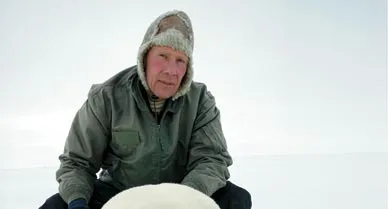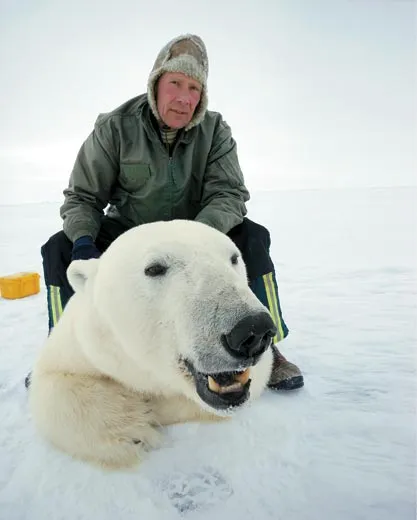Interview: Steven Amstrup
A new study spotlights the plight of the polar bear, but there’s still time to help the beloved creature
/https://tf-cmsv2-smithsonianmag-media.s3.amazonaws.com/filer/interview-amstrup-main-631.jpg)
Because of global warming, the polar bear population is likely to shrink to one-third of its current size within 50 years, according to the United States Geological Survey (USGS). The report was coordinated by Steven Amstrup of the USGS Alaska Science Center.
You've been studying polar bears for 27 years. Were they in trouble when you started?
No. At that time the big issue was making sure they were not overharvested. There had been a lot of trophy hunting and commercial harvest for hides, and Native people had always hunted them. In the 1970s, an agreement by the five polar nations [the United States, the Soviet Union, Canada, Norway and Denmark] got harvest under control.
Why is global warming so bad for polar bears?
They feed almost entirely from sea ice. They catch seals as they come up to breathe or climb onto the ice. This year set a new record for melting sea ice.
Have you seen much change in your study area?
Most of my research is in the Beaufort Sea of northern Alaska. We have already seen major changes in habitat. The sea ice still freezes in winter, but it's retreating dramatically in the summer. Historically, polar bears followed the ice. Now they're forced to stay on land or follow the ice farther north, where there's less to eat.
Will they also have trouble breeding?
My work suggests that polar bears typically build dens [where they raise their young] wherever they finish foraging at the end of the summer. It's not clear how far they have to be from historic denning areas before polar bears won't bother to return or won't be able to return.
This summer, the northwest passage opened up for the first time in history. Is that bad for polar bears?
It could be, if some of the remaining places where polar bears find sea ice are subjected to more human pressures from shipping. But the biggest concern is that sea ice has retreated far more than we thought it was going to. That the Northwest Passage is already open suggests sea ice models might be too conservative.
Do you expect the polar bear population to keep shrinking?
We looked only to the end of this century. And based on the best estimates of future sea ice, we forecast that there would still be polar bears remaining in the Canadian Arctic Islands. Humans caused the problem, and humans can fix the problem. We predict that there will be polar bears around to repopulate their territory if sea ice comes back. It's an expression of hope.
/https://tf-cmsv2-smithsonianmag-media.s3.amazonaws.com/accounts/headshot/laura-helmuth-240.jpg)


/https://tf-cmsv2-smithsonianmag-media.s3.amazonaws.com/accounts/headshot/laura-helmuth-240.jpg)